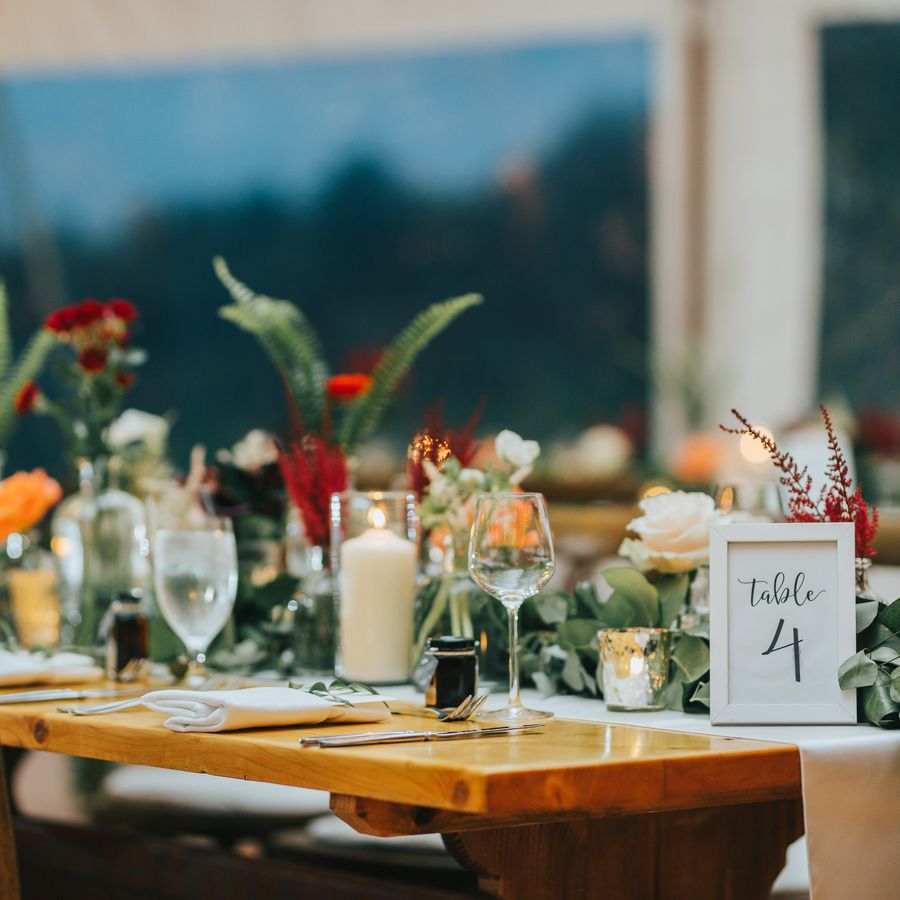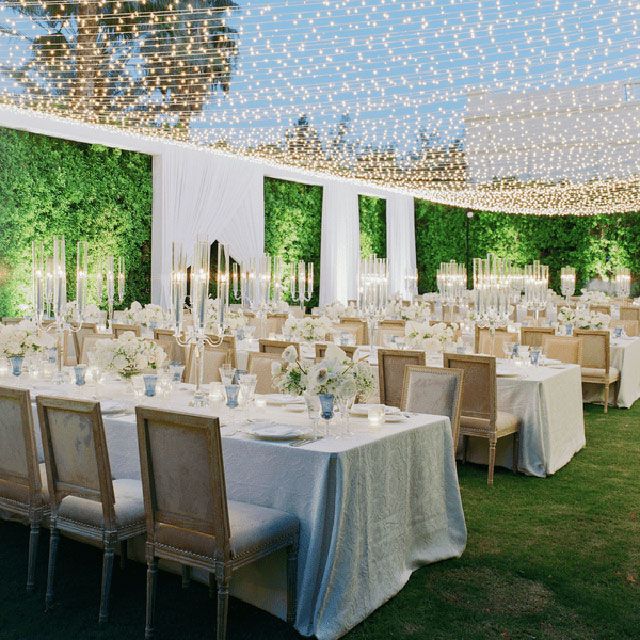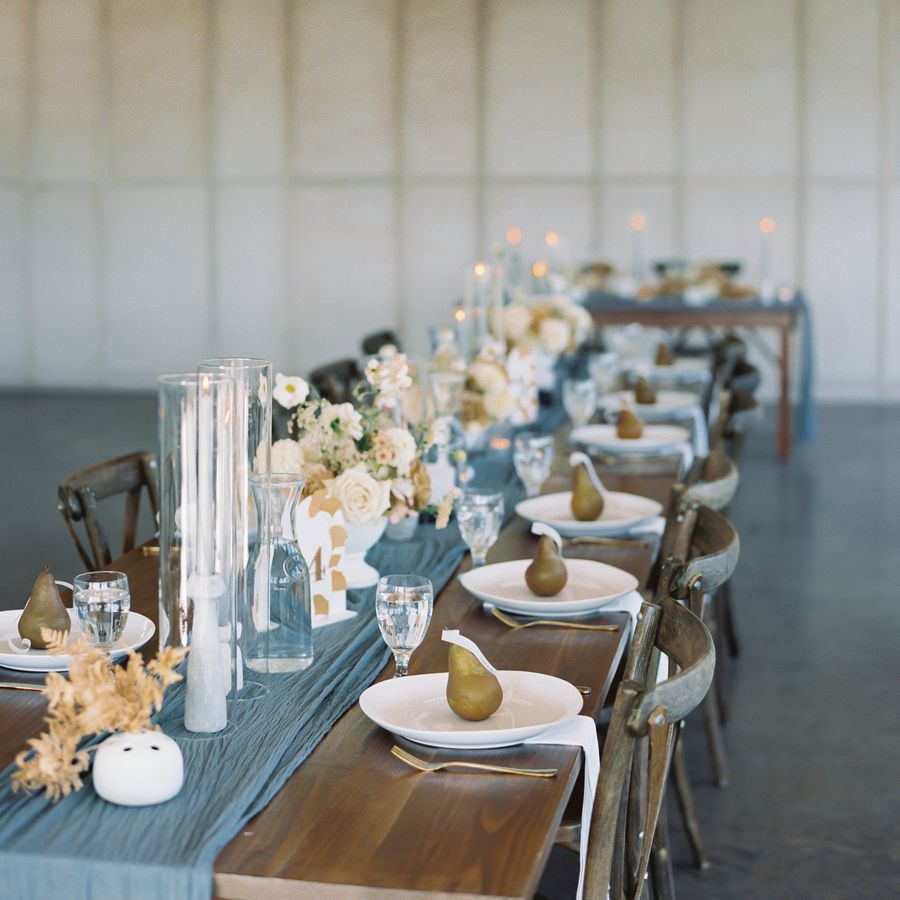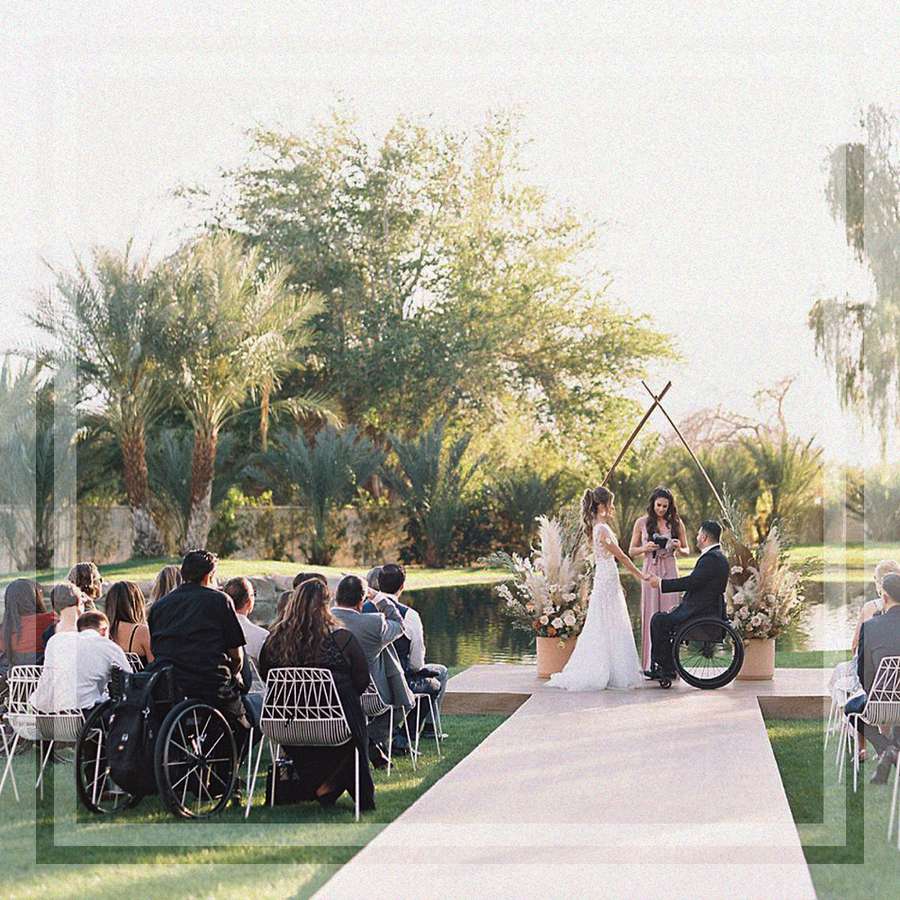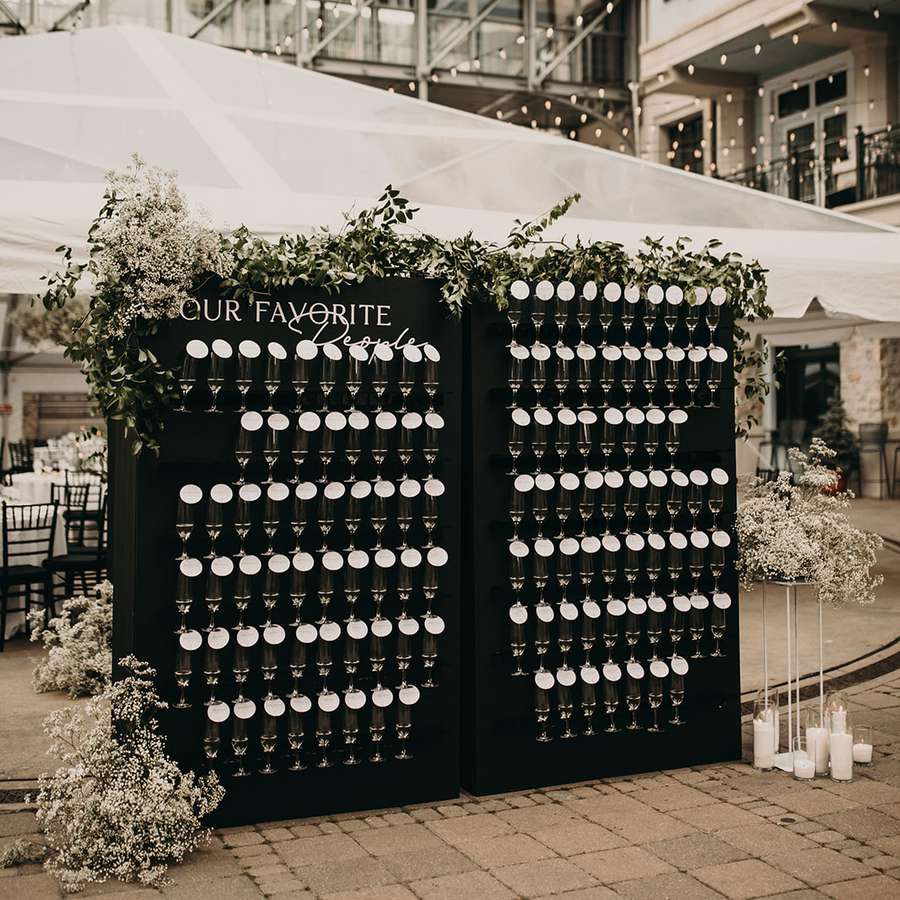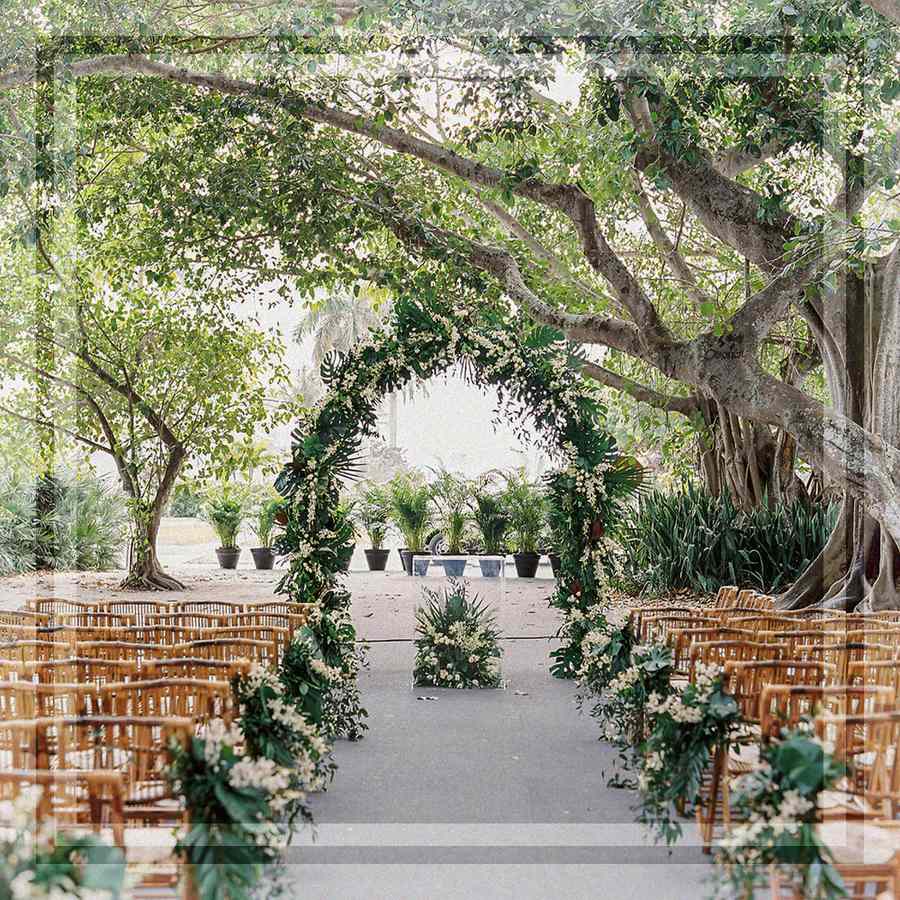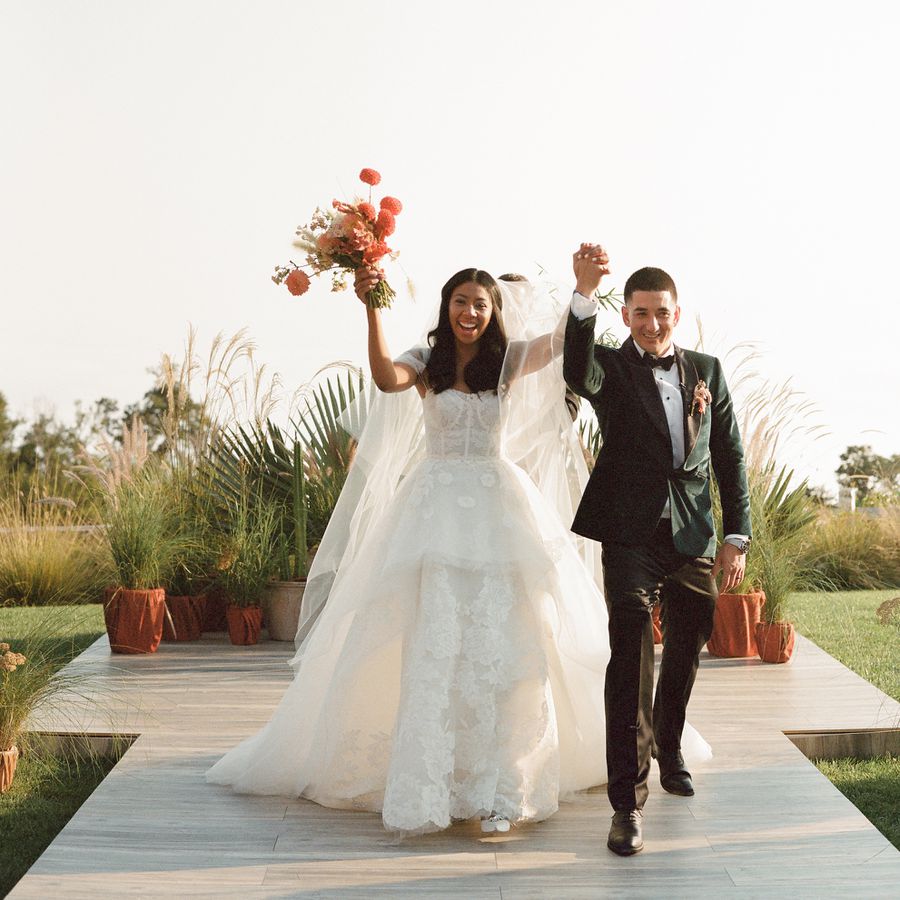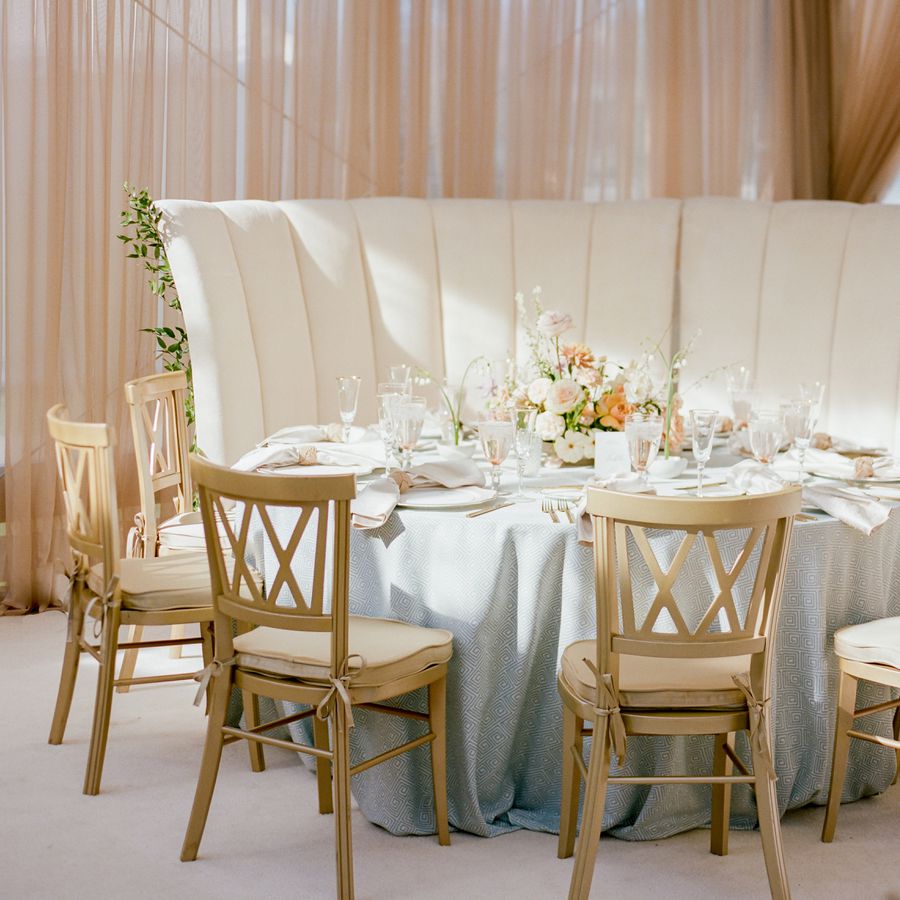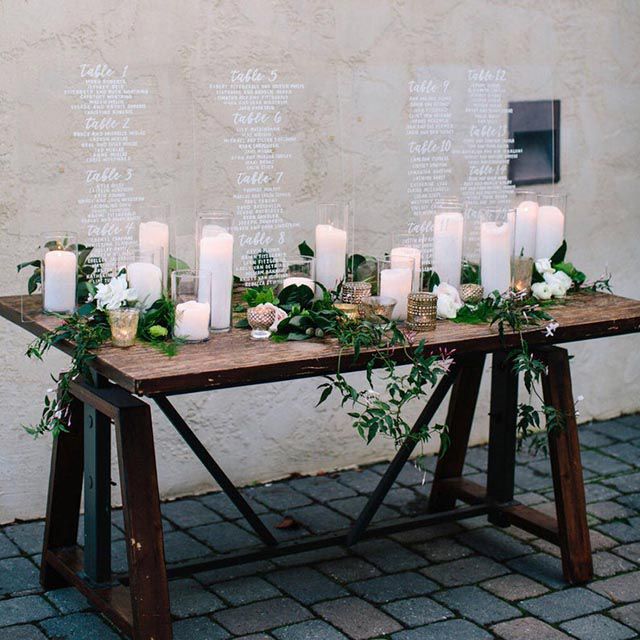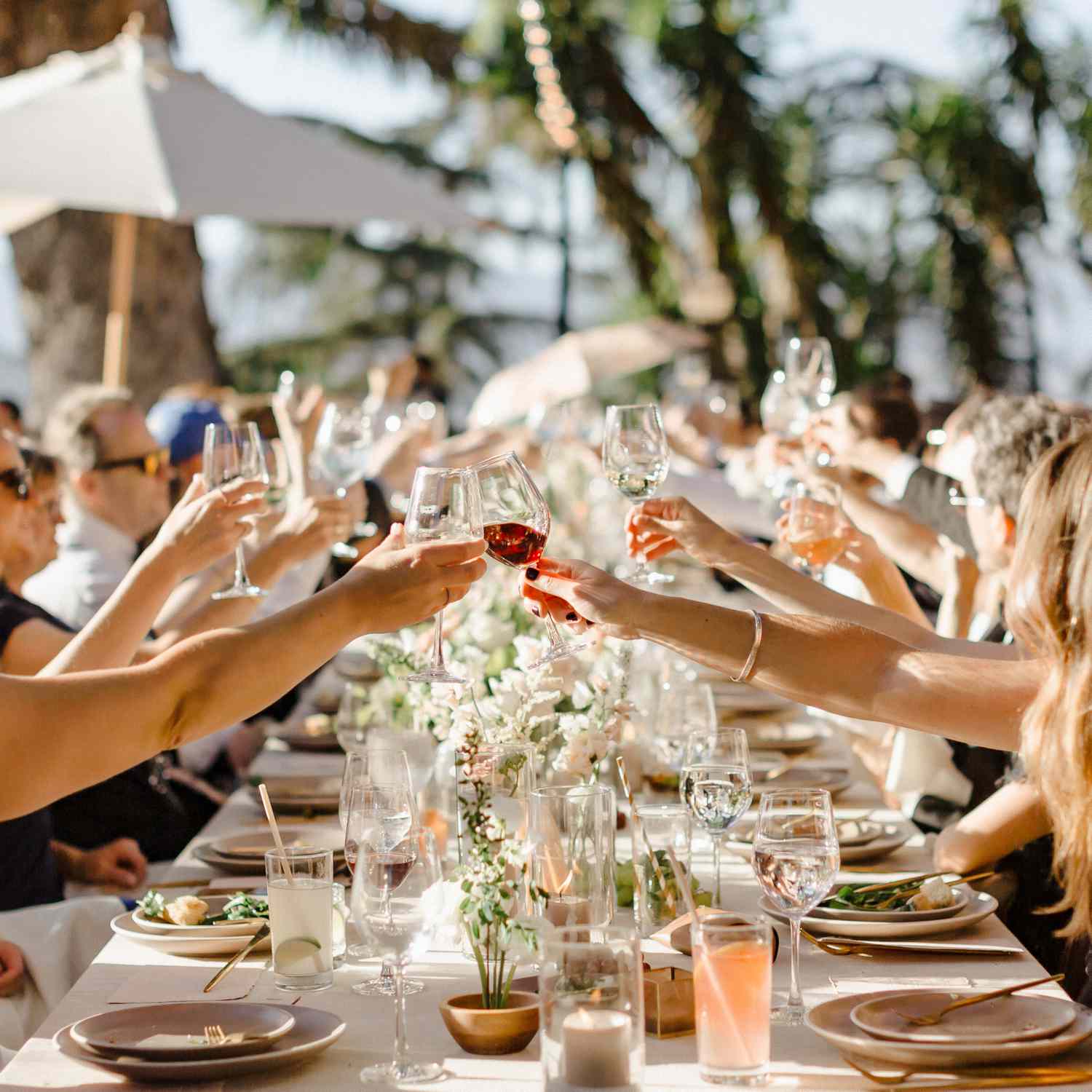
Photo by Logan Cole Weddings
While assigned seating at a wedding certainly isn't mandatory, most couples do opt to create a wedding seating chart for their big day. At any kind of sit-down dinner affair—including your wedding reception—assigned seats just tend to make things simpler. To begin with, it ensures each table will be filled to max capacity. And without assigned seating, for plated dinner service especially, things can quickly get confusing for the staff. In fact, many wedding reception venues actually require assigned reception seating.
Deciding on seating arrangements for your wedding guests can seem overwhelming at first—and trust us, we hear you. Planner Chanda Daniels of A Monique Affair points out that a good starting place is consulting with the venue before beginning the seating chart. "Ask for several layouts based on the guest count to see what the options are, including the plotting of dance floors, photo booths, etc.," she suggests. "That will help you determine where to seat the guests."
Meet the Expert
Chanda Daniels is a wedding planner and the founder and creative director of A Monique Affair.
And remember: Once you get into the swing of things, the process can actually be a good time! Daniels recommends doing it together on a Saturday morning with brunch. "Put the names on index cards and start working on it like a puzzle," she recommends. "Then sit with it for a day or two before it’s actually due. Once you make it final, [send] it to your planner. And remember to have fun!"
To help the two of you get started, we've created the ultimate guide to planning out your wedding seating chart. With these expert rules of thumb and expert tips, you'll have it figured out in no time.
Pick Table Shapes
:max_bytes(150000):strip_icc()/heather-kelly_37-4eec5450d31d41c-27f2e2f8978d4210b9b6c22d89537971.jpeg)
PHOTO BY WE THE ROMANTICS
Before you start seating guests, you'll need to have a game plan for your tables, generally, as the size and shape will dictate how many guests can be seated at each one. When it comes to reception layout and table shapes, typically there are four standard options: Round, rectangle, oval, and square. Different table shapes have their own benefits, too. Rectangular tables can fit a greater seated capacity into a space, and it's easier for guests to talk across them. Round tables, on the other hand, are the most traditional option and afford your guests more legroom.
Keep Your Friends Close
:max_bytes(150000):strip_icc()/MonSoleil_DeeEugene_Brides_0102-53b5f73218fd4424ab0f7ebbc7e121b8.jpg)
Photo by Mon Soleil
A head table with your wedding party (and their dates) is a great way to acknowledge their special role and ensure you're surrounded by your BFFs during the reception. Opting for a sweetheart table? Have your wedding party "host" tables instead. Seat them with their dates and a group of other mutual friends. They should be seated at the third-best tables in the room: The first is your sweetheart table, the second-best table is for your parents, and the third nearest table is for your wedding party. (Near the dance floor, naturally!)
Figure Out Where Your Parents Will Sit
:max_bytes(150000):strip_icc()/GettyImages-1400798442-c880660fa6254b4e8a8a6d982f73a648.jpg)
mgstudyo / Getty Images
Traditionally, all of the parents will share a table at the reception, along with grandparents and any siblings that aren't in the wedding party. This gives everyone another chance to get to know each other and bask in the glow of your special day. While all of your guests will be thrilled to be there and share in your celebrations, no one will likely be as overjoyed as your parents—which is a wonderful thing for them to share together.
Of course, things can get tricky when you're dealing with divorced parents (or other more complex family circumstances). If things are tense between certain key individuals, consider having two tables that are equally close to the head table and then put one at each table. That way, no one feels uncomfortable or left out. Another option: Consider seating them at the same rectangular table but at opposite ends (and try to make the table long).
Enlist Your Parents' Help to Seat Their Friends
:max_bytes(150000):strip_icc()/KGRuiVazFranco-LoveIsMyFavoriteColor-771-e969173dc19c46afb23aa328fc0c4f8b.jpg)
Photo by Love Is My Favorite Color
If you have no idea where to seat your parents' close friends, ask your mother and future mother-in-law (or whoever is closest to them) to help arrange those tables—they'll be happy to be involved. Generally, it's helpful to involve your parents in the seating chart process. If there's room at the family table(s), for example, they're sure to have an opinion on which close friends or other extended family members they might like to have seated at their table. And if there will be another family-and-friends table nearby, they may want to help choose those guests, too.
Organize Guests by Groups
:max_bytes(150000):strip_icc()/katie-jimmy_42-c366525ecafa4d2fb-8a2d2636c19f4fb6a6e764db830d4e22.jpeg)
PHOTO BY BOTTEGA 53 STUDIO
Once you've finalized who's coming, step one is to start grouping guests according to how you know them, such as family members, high school friends, college friends, work friends, etc. This doesn't mean you have to sit them according to the group, but a picture will start to form of who already knows each other and gets along.
In addition to grouping your guests by how you know them, you can also consider your guests' age, interests, and backgrounds. "People who have kids around the same age, people who traveled to be at the wedding—find the commonality within people so they can have things to talk about, again like putting together the perfect puzzle," says Daniels. Try to make everyone feel comfortable by offering a mix of familiar and new faces at each table. And, of course, be tactful: Absolutely avoid seating people together who you know don't get along.
Skip the Singles Table
If you've been dying to fix your old coworker up with your cousin, you might take this opportunity to discreetly seat them next to each other. But resist the urge to create a separate "singles" table, which might embarrass your guests. Also, don't seat your unmarried friend at a table full of married couples. Use your best judgment, and try to be sensitive to guests' feelings.
Consider a Kids' Table
:max_bytes(150000):strip_icc()/GettyImages-614292848-eedc72215727481984713c0c836bcbc6.jpg)
James Brokensha Photography / Getty Images
If you have several children as guests at your wedding, one strategy is to seat them together at a separate kids' table, where you can even have engaging activities and/or crafts to keep them occupied. And, while it might be tempting to put the babies in a corner, definitely do not put the kids' table too far away from where their parents are sitting. Younger children might get anxious when they look around and don't see their parents anywhere (and vice versa). On the other hand, if your flower girl and ring bearer are the only children present, seat them with their parents.
Keep the Venue in Mind
:max_bytes(150000):strip_icc()/2019_10_20_nissaderrick_1551-71fd6c8fb0744cce89d9389706a429b3.jpg)
Photo by KT Merry
It's easy to get caught up in who's sitting where, but just don't forget to give your VIPs the best seats in the house so they have a clear view of all the action and can jump into the celebration. Also, remember that older guests may want to be a little farther from the band (and not near a speaker). Guests in wheelchairs or those who need more mobility should be seated at tables that are either closer to one of the edges of the room or closer to the dance floor, so they’ll have plenty of space to maneuver as needed.
Seat younger guests who will be dancing all night near the band or the DJ, so they have easy access to the dance floor.
Make a Digital Seating Chart
Sites including WeddingWire, AllSeated, and Wedding Mapper make it incredibly easy to design a seating chart online. As an added bonus, these sites have drag 'n' drop seating options, which makes it so simple to arrange (and rearrange) to your heart's content. You can also customize the templates and try out different table options. AllSeated even has an extensive library of dimensions for actual venues; if yours is included, you can select it and the dimensions will auto-populate. In addition to customizing layouts for tables and seats, you can add other space-consuming setups—such as bar locations or additional seating areas—to really get a sense of how the space will flow.
Create a Physical Seating Chart
Photo by Michelle Beller Photography
For couples who would prefer to make a wedding seating chart that's tactile, you can use one or more poster boards to create a physical layout you can play around with until you've found the right mix. (This is also where Daniels' index card idea comes in handy). After you decide on what type of tables you want and where they'll be located, based on the dimensions of your venue, sketch them on the poster board. To save a lot of do-overs, keep things neat by writing each guest's name on a Post-It and then simply stick (and unstick) guests in different seating arrangements. Another option: A large whiteboard and dry-erase markers.
Consider Assigning Tables Only (Not Seats)
:max_bytes(150000):strip_icc()/MR5_7287-45eda34a84ff4d0b977fe15df51e6501.jpg)
Photo by M. Hart Photography
If you're still not into an assigned seating master plan, why not consider assigning tables—without specific seats—instead? This way your wedding guests will still have some direction but can make their own choices, too, and no one will be scrambling for seats when you’re about to make your grand entrance. Just as you would with an assigned wedding seating chart, put thought into who you’ll be grouping together to make sure everyone’s got someone to talk to and will have a good time. If you forego assigned seats or tables, just make sure your elderly guests always have a designated place to sit down.
If you plan on having a formal sit-down meal with wait staff service, assigning tables instead of specific seats may not be your best option. Venues will often require place cards for formal dining to subtly indicate which guests will be receiving which meal.
Convey All Table Assignments Clearly
:max_bytes(150000):strip_icc()/georgia-alex_42-d07e3a4a85244489-978c70b259604d3fa64c553398975a43.jpeg)
PHOTO BY SOTIRIS TSAKANIKAS
When it comes to actually telling your guests where to sit, the goal for wedding table cards or place cards is to find that sweet spot between creativity and ease of use. Tented or envelope cards are the most traditional and can be arranged in a variety of ways depending on the type of tables you’re working with. Table assignment signs and charts can also work well. Arranging guests’ names in alphabetical order (versus grouped by table) means they’ll be able to find their seats faster than if they had to read every table arrangement on the list to figure out where to go.
Opting for one or two long tables for everyone? A diagram with numbered seats, accompanied by an alphabetical list of guests’ names and seat numbers, will get them in place with ease. A font that’s easier to read is always welcome, for any sort of signage.
The bottom line: Having some sort of wedding seating plan, even if it's just table assignments, will make your reception flow that much more smoothly.

